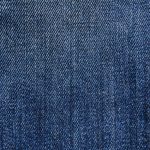When facing extreme weather, you might wonder whether natural or synthetic fabrics are better suited for your needs. Each type has its strengths, from the breathability of cotton in the heat to the insulation of wool in the cold. But what happens when you encounter a mix of conditions? Understanding the nuances of these materials could greatly impact your comfort and performance. Let’s explore what you need to know before making your choice.
Table of Contents
Key Takeaways
- Natural fabrics provide breathability and moisture management, making them comfortable in extreme heat, while synthetics excel in moisture-wicking properties.
- Wool offers excellent insulation in cold conditions, while synthetic fabrics provide lightweight warmth and quick-drying capabilities.
- Durability varies; synthetic fibers typically resist wear and tear better than natural fibers, making them suitable for harsh environments.
- Natural fabrics can be more sustainable, but synthetic options can be made from recycled materials, reducing environmental impact.
- Comfort and performance depend on activity level and weather conditions, requiring careful selection based on specific needs.
Understanding Natural Fibers
Natural fibers, derived from plants and animals, have been used for centuries due to their unique properties and comfort.
You’ll find that cotton, wool, and linen not only feel great against your skin but also offer breathability and moisture-wicking capabilities.
Cotton’s softness makes it perfect for casual wear, while wool’s insulating properties keep you warm in colder conditions.
Linen, on the other hand, excels in hot weather, allowing air to circulate efficiently.
These fibers are biodegradable, making them an eco-friendly choice.
When you choose natural fibers, you’re investing in sustainable options that enhance your comfort and well-being.
Plus, they often come with fewer chemicals compared to synthetic materials, reducing your exposure to harmful substances.
Embrace the benefits of natural fibers in your wardrobe!
Exploring Synthetic Fibers
While natural fibers offer numerous benefits, synthetic fabrics have carved out their own niche, especially in extreme weather conditions. These materials, like polyester and nylon, excel in durability and moisture-wicking properties, keeping you comfortable no matter the climate. Their lightweight nature and quick-drying capabilities make them ideal for outdoor adventures. Check out the table below to see how synthetic fibers stack up against natural options:
| Feature | Synthetic Fabrics | Natural Fabrics |
|---|---|---|
| Durability | High | Moderate |
| Moisture-Wicking | Excellent | Fair |
| Weight | Lightweight | Heavier |
| Drying Time | Fast | Slow |
In extreme weather, choosing the right synthetic fiber can greatly enhance your experience.
Environmental Impact of Fabrics
When considering fabrics for extreme weather, it’s crucial to also think about their environmental impact.
Natural fabrics like cotton and wool may seem eco-friendly, but they often require significant water and land resources, leading to deforestation and soil depletion.
Natural fabrics such as cotton and wool can strain resources, often causing deforestation and soil depletion despite their eco-friendly image.
On the other hand, synthetic fabrics like polyester can be made from recycled materials, reducing waste but contributing to microplastic pollution in oceans.
Both types of fabrics have their pros and cons. You’ll need to weigh the sustainability of production processes against the longevity and recyclability of the materials.
Ultimately, choosing fabrics with less environmental impact involves considering how they’re made, their lifecycle, and how they can be responsibly disposed of or recycled after use.
Performance in Extreme Heat
When you’re out in extreme heat, the type of fabric you wear can make all the difference.
You need materials that offer breathability and comfort while efficiently managing moisture to keep you cool.
Understanding how natural and synthetic fabrics perform in these conditions helps you choose wisely for your next adventure.
Breathability and Comfort
In extreme heat, breathability and comfort become essential for any fabric you choose to wear. Natural fabrics like cotton and linen allow air to circulate, keeping you cooler, while synthetic options can trap heat. Your choice greatly impacts how you feel throughout the day.
| Fabric Type | Breathability Level | Comfort Factor |
|---|---|---|
| Cotton | High | Soft and Relaxed |
| Linen | Very High | Light and Breezy |
| Polyester | Moderate | Stretchy but Stuffy |
| Nylon | Low | Sleek but Clingy |
Choosing the right fabric means enjoying your time outdoors without the discomfort of overheating. Prioritize breathability to stay energized and focused in the sweltering heat.
Moisture Management Efficiency
As temperatures soar, managing moisture efficiently becomes essential for your comfort during outdoor activities. Choosing the right fabric can greatly influence how well you stay dry and cool.
Natural fabrics like cotton absorb moisture but can feel heavy when wet. On the other hand, synthetic materials like polyester wick moisture away from your skin, promoting faster evaporation.
Here are some key points to evaluate:
- Wicking Ability: Synthetic fabrics excel in pulling sweat away from your body.
- Drying Speed: Synthetics dry rapidly, keeping you comfortable longer.
- Weight: Lightweight synthetics reduce bulk and improve mobility.
- Durability: Many synthetics withstand rigorous outdoor use better than natural fibers.
- Odor Resistance: Some synthetic options combat odor, enhancing your experience.
Choosing wisely can enhance your performance in extreme heat.
Heat Stress Mitigation
Effective moisture management plays a pivotal role in heat stress mitigation. When you’re in extreme heat, the clothing you choose can make all the difference.
Natural fabrics like cotton and linen breathe well, allowing sweat to evaporate and keeping you cool. However, synthetic materials like polyester and nylon often incorporate advanced moisture-wicking technologies, actively pulling sweat away from your skin. This quick evaporation helps regulate your body temperature more effectively during intense activities.
Don’t overlook the fit, either—looser clothing promotes airflow, enhancing comfort. Ultimately, the best choice depends on your specific needs and activity level.
Performance in Extreme Cold
When temperatures plummet, choosing the right fabric becomes essential for outdoor activities. Natural fabrics like wool offer excellent insulation and breathability, helping you stay warm without overheating.
Selecting the right fabric is crucial for staying warm and comfortable during outdoor activities in cold temperatures.
On the other hand, synthetic fabrics such as polyester and nylon provide lightweight warmth and quick-drying properties.
Consider these factors when selecting your cold-weather gear:
- Insulation: Look for materials that trap heat effectively.
- Weight: Lightweight options allow for easier movement.
- Durability: Guarantee the fabric can withstand harsh conditions.
- Flexibility: Fabrics that stretch with movement enhance comfort.
- Layering Potential: Choose fabrics that work well together for maximum warmth.
Moisture Management and Water Resistance
While braving extreme weather, managing moisture and ensuring water resistance are essential for comfort and performance. Natural fabrics like wool and cotton can absorb moisture, providing some breathability but often leaving you damp in heavy rain. On the other hand, synthetic fabrics like polyester and nylon excel in moisture-wicking and repel water, keeping you dry.
Here’s a quick comparison:
| Fabric Type | Moisture Management | Water Resistance |
|---|---|---|
| Wool | Absorbs moisture | Moderate |
| Cotton | Absorbs moisture | Low |
| Polyester | Excellent wicking | High |
| Nylon | Good wicking | Very High |
Choosing the right fabric can make all the difference in extreme conditions.
Durability and Longevity of Fabrics
Choosing the right fabric for extreme weather isn’t just about immediate comfort; it also involves evaluating durability and longevity.
Selecting the appropriate fabric for extreme weather requires careful consideration of both comfort and long-lasting durability.
You want materials that can withstand harsh conditions and last through repeated wear. Natural fabrics like wool and cotton might offer breathability and comfort, but they can wear out faster in extreme settings.
On the other hand, synthetic fabrics like nylon and polyester are engineered for resilience, resisting tears and fading.
Here are some factors to evaluate regarding durability and longevity:
- Tensile strength: Measures how much force the fabric can withstand.
- Abrasion resistance: Indicates how well the fabric resists wear from friction.
- UV resistance: Protects against sun damage over time.
- Moisture absorption: Impacts longevity in wet conditions.
- Care requirements: Some fabrics require special washing and handling.
Cost Considerations for Consumers
Durability often comes with a price tag that consumers need to evaluate. When choosing between natural and synthetic fabrics for extreme weather, consider your budget.
Natural fabrics, like wool and cotton, may have a higher upfront cost, but they often provide long-term value through durability and comfort.
On the other hand, synthetic options, such as polyester or nylon, usually come at a lower price point, making them accessible for those on a tight budget. However, keep in mind that they mightn’t perform as well in extreme conditions over time.
Ultimately, weigh the initial cost against the potential lifespan and performance of the fabric. Investing wisely in the right material can save you money in the long run.
Sustainable Practices in Fabric Production
As consumers become more environmentally conscious, understanding sustainable practices in fabric production is crucial. Choosing fabrics made through eco-friendly processes can greatly affect the planet.
Here are some key practices to take into account:
Consider these essential sustainable practices in fabric production for a positive environmental impact.
- Organic materials: Fabrics made from organic cotton or hemp reduce chemical usage and promote biodiversity.
- Recycling: Using recycled fibers helps minimize waste and reduces the need for virgin materials.
- Water management: Sustainable production methods focus on efficient water use and treatment to prevent pollution.
- Fair trade: Supporting brands that prioritize fair labor practices guarantees ethical treatment of workers.
- Low-impact dyes: Opting for dyes that require less water and energy can decrease environmental harm.
Choosing the Right Fabric for Your Needs
When choosing the right fabric for your needs, consider the specific weather conditions you’ll face.
Different fabrics offer varying levels of comfort and performance, so it’s important to match them to your activities.
Weather-Specific Fabric Selection
How do you know which fabric is best for the extreme weather you face? Selecting the right fabric can make all the difference in your comfort and protection.
Start by considering the specific conditions you’ll encounter. Here are key factors to evaluate:
- Moisture-wicking properties: Essential for keeping you dry in humid or wet conditions.
- Insulation: Look for materials that retain heat without adding bulk in cold weather.
- Breathability: Important for preventing overheating during strenuous activities.
- Durability: Choose fabrics that can withstand harsh elements and rough usage.
- UV protection: Crucial for shielding against harmful sun rays in outdoor environments.
Comfort and Performance Factors
Selecting the right fabric goes beyond just understanding the weather conditions; comfort and performance play significant roles in your overall experience.
When you’re facing extreme weather, you need materials that not only protect you but also feel good against your skin. Natural fabrics like wool and cotton can offer breathability and moisture-wicking properties, keeping you comfortable.
However, synthetic options such as polyester and nylon often excel in durability and quick-drying capabilities, making them ideal for high-intensity activities.
Consider your activity level and how long you’ll be exposed to the elements. Ultimately, the best choice balances comfort, performance, and the specific demands of your environment, so you can enjoy your time outdoors without distraction.
Frequently Asked Questions
Can Natural Fabrics Be Treated for Better Water Resistance?
Yes, you can treat natural fabrics to improve their water resistance. Techniques like applying wax, silicone, or special coatings enhance their performance, making them more suitable for wet conditions while maintaining breathability and comfort.
How Do Synthetic Fabrics Affect Skin Sensitivity?
Synthetic fabrics sometimes stimulate skin sensitivity, causing discomfort or irritation. If you notice itching or redness, consider switching to softer options. It’s smart to test various textiles to find what feels best against your skin.
What Are the Best Blends of Natural and Synthetic Fibers?
You’ll find that blends like cotton-polyester offer breathability and durability, while merino wool with nylon enhances insulation and moisture-wicking. Experimenting with these combinations can optimize comfort and performance for your specific needs.
Are There Any Natural Fabrics That Resist Mildew?
You might think natural fabrics can’t resist mildew, but cotton and linen actually perform well with proper care. Their breathability and moisture-wicking properties help prevent mold, making them suitable for humid conditions.
How Do Colorfastness and Dyeing Differ Between Fabric Types?
Colorfastness and dyeing vary greatly between fabric types. You’ll find that synthetic fabrics often hold dyes better, while natural fibers may fade more easily, but they can absorb dyes more vibrantly, enhancing their overall appearance.
- Tetron Fabric for Marine Applications: Durability and Use Cases - June 18, 2025
- Tetron Fabric for Outdoor Furniture: Weather Resistance and Care - June 18, 2025
- Tetron Fabric for Wall Coverings: Style and Application Tips - June 18, 2025







